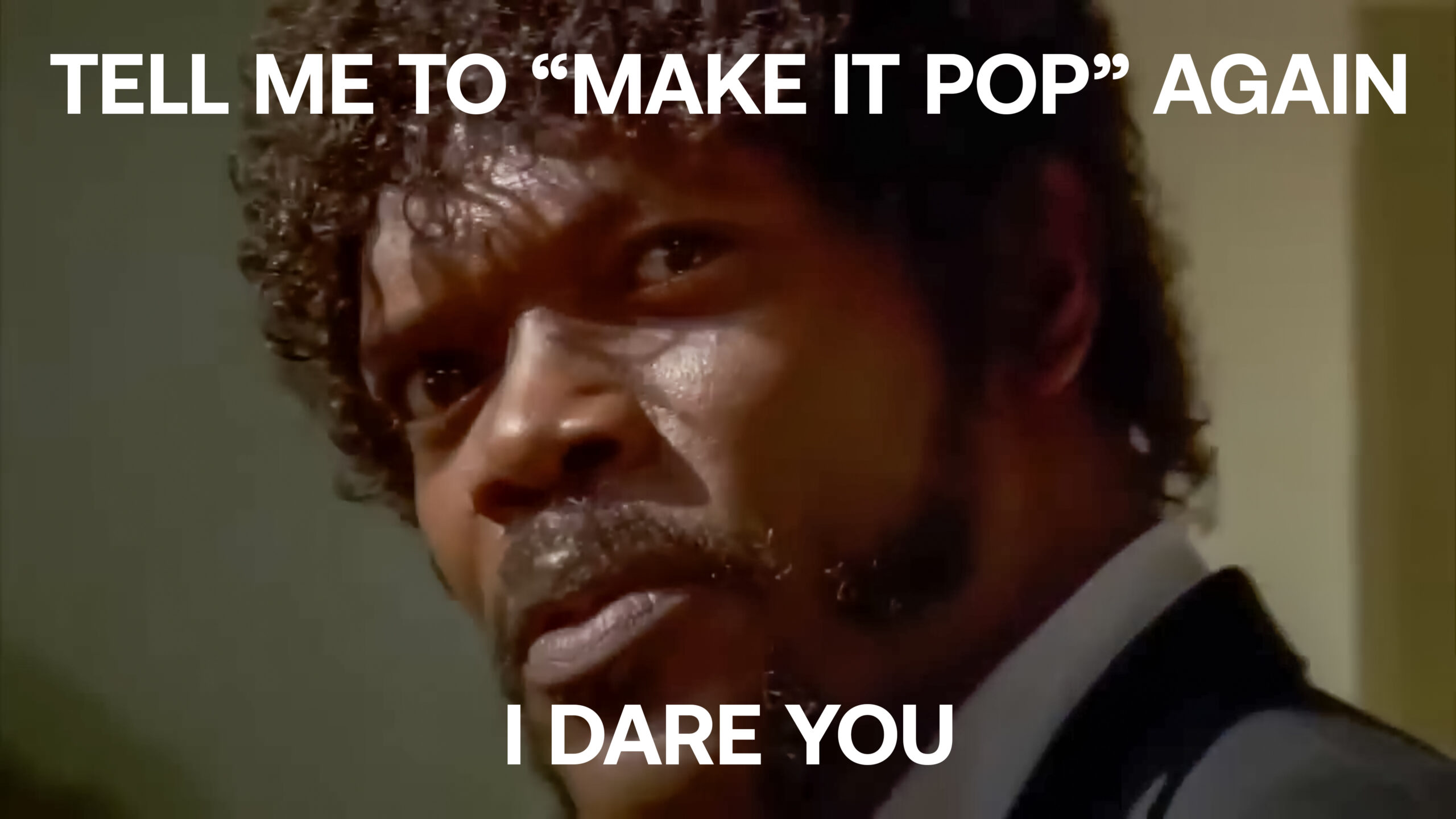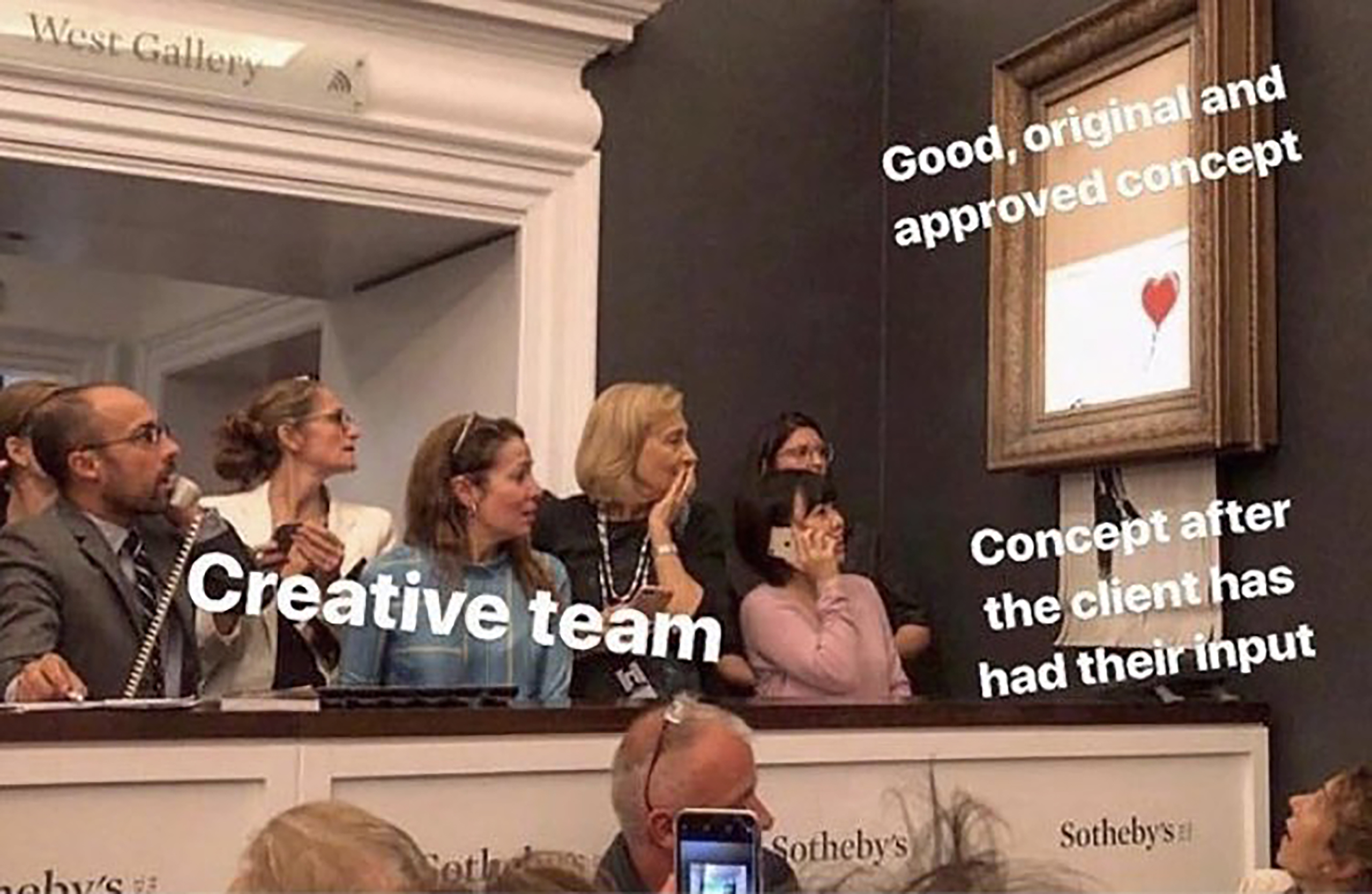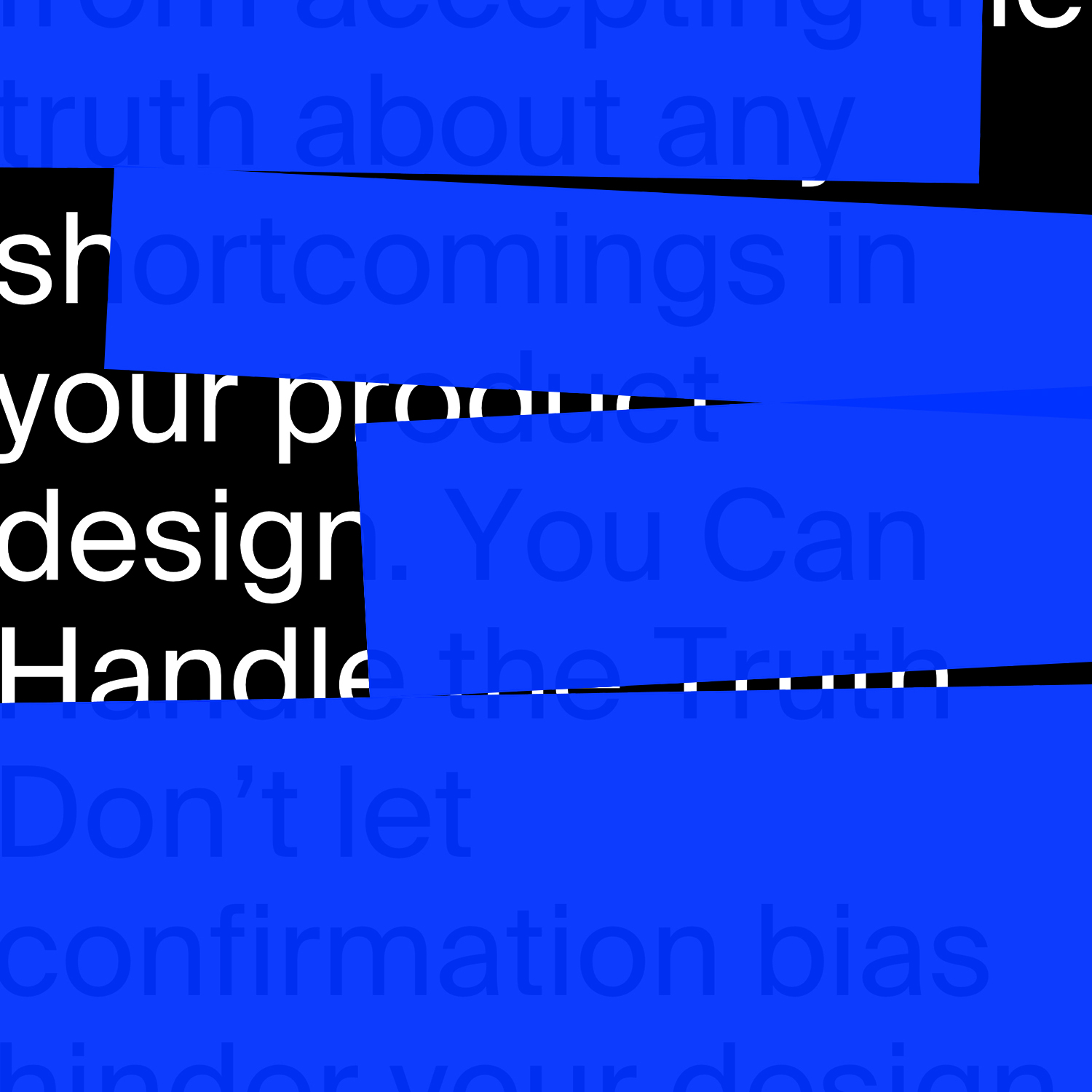As I reflect on my early days as a designer, I realize how often I would dive into projects without asking the necessary questions or setting clear goals. Back then, my approach was simple: I would send a homepage design, gather feedback, and then incorporate every piece of input without much thought. Or I get feedback like this: “It’s good, but can you make it pop more?” I stared at those words, trying to decipher what “pop” even meant. Was it a color issue? Did they want more contrast? A different font? I rarely paused to consider how these changes aligned with the project’s objectives.
It wasn’t just about the vagueness of the feedback; it was about the sinking realization that I had no idea how to move forward. But that experience taught me something invaluable: the importance of guiding clients to give the kind of feedback that’s not just understandable, but truly useful.

The next time a client says can you “make it pop,” I’ll send this meme 😂
Many designers fail to use feedback effectively because they:
- Don’t set clear goals or ask for specific feedback.
- Implement all feedback without considering its relevance.
- Allow non-stakeholders to influence the design direction.
- Lack of communication strategies to explain their design choices.
Understanding the Client's Perspective
The first step in getting the correct feedback is understanding that your clients likely don’t speak “design.” They might not know the difference between a serif and a sans-serif font, and that’s okay. Their job is to understand their brand and audience, and your job is to translate that into compelling visuals and bring value.
Clients often come from different industries and have varying levels of familiarity with design concepts. For them, words like “pop” might be their best attempt to communicate something they can’t quite articulate. This is where empathy comes in. By understanding their perspective and recognizing their limitations, you can help bridge the communication gap. To make this easier, try to educate your clients gently. Offer brief explanations when discussing design elements. For instance, if they mention wanting something to “stand out more,” you could respond with, “We can increase the contrast between the elements to make it more prominent. Does that align with what you’re envisioning?”
I’ve found that educating clients on basic design principles can go a long way. It’s not about giving them a crash course in design but rather about helping them understand why certain decisions are made. This sets the stage for more constructive feedback and a smoother collaboration.
Side Tip:
Design isn’t just about making something look good—it’s about solving a problem for a business in a way that really works. To do that, you need feedback early on and throughout the process. Without it, you can’t be sure you’re going in the right direction.
Avoiding Unfocused Feedback
One of the biggest challenges in design projects is managing feedback. If you don’t ask for specific feedback, clients might show the design to others who aren’t involved in the process, like friends or partners. This often leads to feedback based on personal preferences rather than the project’s goals and target audience.
By directing the feedback process, you can ensure it remains relevant and valuable. For example, if a client asks for a change, inquire how it contributes to the set goals. This approach not only keeps the project focused but also reinforces your role as an expert guiding the design process.

Someone has turned the shredded Banksy artwork into an agency creative department meme.
Turning Frustration Into Creativity
Here’s what I discovered during my career: Feedback, even when it feels harsh, often contains gems of insight. The trick is to listen beyond the surface. For instance, when a client said a feature wasn’t intuitive, it wasn’t about dismissing my design but about enhancing user experience. By delving into their concerns, I found new ways to refine and improve my work, turning frustration into creativity.
As I embraced this mindset shift, I began to see client feedback as a collaborative tool rather than a critique. Each comment became an opportunity to better understand user needs and expectations. It was like discovering a new layer to my design process—one that made my work more impactful and aligned with real world application.
My Step-By-Step Feedback Guide
Early Communication
Communicate early in the process; for example, share the sitemap and structure of the pages (wireframes) and style boards. Specify the type of feedback you need and explain how the design choices contribute to the goals outlined in the kickoff briefing. This early-stage communication helps prevent misunderstandings and ensures that the project stays on track.
Asking the Right Questions
When it comes to gathering feedback, the questions you ask can make all the difference. Open-ended questions are great for getting a sense of the client’s overall impression, but they can sometimes lead to vague responses. On the other hand, too many specific questions can feel overwhelming.
I’ve learned to strike a balance. For example, instead of asking, “Do you like the color scheme?” I might ask, “How do you feel the color scheme reflects the brand’s personality?” This encourages the client to think critically about their feedback and provide me with insights that I can actually use.
Another tip is to ask follow-up questions to clarify any ambiguous feedback. If a client says, “It doesn’t feel right,” I’ll gently probe further: “Can you specifically pinpoint what doesn’t resonate? Is it the layout, the colors, or something else?” This helps narrow down the issue and prevents any misinterpretation.
Embrace Your Role as an Expert Designer
When feedback is given, don’t just implement it blindly. Instead, ask yourself and the client how this feedback aligns with the goals established in the kickoff briefing and the broader business objectives
For example, if a client requests a bigger logo, take the opportunity to explain the potential impact. Show examples of how a larger logo might affect the design and user experience. This not only educates the client but also helps maintain the integrity of the design.
This is what I send to clients asking to increase the logo size:
Increasing the size of the logo pushes important information further down the page, potentially below the fold (https://www.nngroup.com/articles/page-fold-manifesto/), requiring visitors to scroll. This can undermine the primary goal of the website, as the content above the fold typically determines whether a visitor stays. If you look at the websites of well-known brands like Apple or IKEA. You’ll notice that 99% of them have logos that are just large enough to be recognizable—nothing more. While it’s important for visitors to know which brand is behind the website, the service, offers, and other content are far more crucial than the size of the logo.”
It’s also important to stay true to your design vision. It’s easy to get caught up in making every little change the client requests, but this can dilute the final product. Remember, you were hired for your expertise—trust your instincts, but also be flexible enough to adapt when needed.
Interpreting Client Feedback
Even with all the preparation in the world, you’ll still encounter feedback that’s hard to decipher. Over time, I’ve developed a bit of a sixth sense for reading between the lines. When a client says, “It’s missing something,” what they might really mean is that the design doesn’t evoke the emotion they were hoping for.
In these situations, I take a step back and consider the bigger picture. What are the project’s goals? What has the client been emphasizing throughout our discussions? This context often provides the clues needed to unravel cryptic feedback.
And if all else fails, don’t be afraid to ask for clarification. I’ve found that most clients appreciate it when you take the time to ensure you’re both on the same page. It shows that you care about their input and are committed to delivering the best possible result.
Turning Feedback Into Actionable Design Changes
Once you’ve gathered and interpreted the feedback, it’s time to get to work. However, not all feedback is created equal. One of the most challenging parts of the job is figuring out what to act on and what to respectfully set aside.
Here’s my approach: I prioritize feedback based on how it aligns with the project goals. If a client’s suggestion enhances the design while staying true to the objectives, it’s a no-brainer. But if it detracts from the overall vision, I’ll have a conversation with the client to explain my concerns and suggest alternatives.
Key Takeaways
So, how can you transform client feedback into an effective design? Here’s what I’ve learned:
- Listen Actively: Approach feedback with an open mind. Listen to what’s being said and try to understand the underlying concerns
- Ask Clarifying Questions: Don’t be afraid to dig deeper. Ask questions to get to the root of their feedback and explore their perspective
- Find the Opportunity: Look for the value in the feedback. How can it enhance the user experience or add to the project’s goals?
- Collaborate: View feedback as a chance to work together towards a better solution. It’s not about compromising your vision but aligning it with the client’s needs.
Remember, the goal is to create a design that not only meets the client’s needs but also reflects your creative vision. With the right approach, you can guide your clients to provide the feedback you need to make that happen. And who knows? The next time you see “make it pop” in your inbox, you might just smile—because you’ll know exactly what to do.
